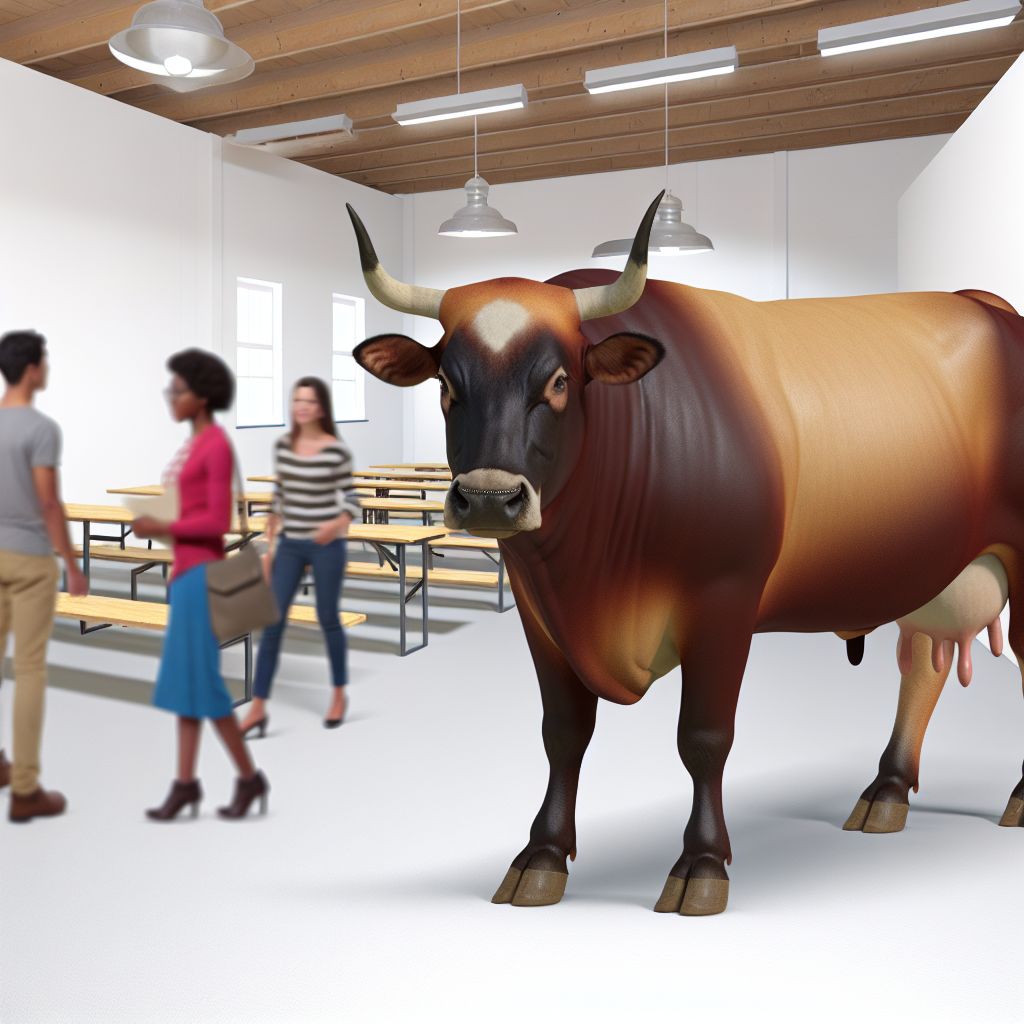Deutsch: Rinderarten / Español: Especies bovinas / Português: Espécies bovinas / Français: Espèces bovines / Italiano: Specie bovine
Bovine species refers to members of the genus Bos, which includes various species of cattle and their relatives. These animals play significant roles in the environment, both through their ecological impact and their economic importance in agriculture.
Description

Bovine species typically include domestic cattle (Bos taurus), zebu (Bos indicus), and wild species such as the bison, yak, and various types of wild cattle. These animals are integral to human societies for meat, milk, and by-products like leather and manure. In an environmental context, bovine species affect landscapes through grazing, which can lead to changes in plant communities, soil composition, and biodiversity.
The presence of bovine species in various ecosystems often shapes the vegetation structure and influences the habitats of other wildlife. Managed well, grazing by bovines can support biodiversity by maintaining open habitats and promoting a mix of plant species. However, overgrazing can lead to soil Erosion, loss of plant diversity, and desertification.
Application Areas
Bovine species are central to several environmental and agricultural applications:
- Agricultural production: As one of the primary sources of meat and dairy products worldwide.
- Land management: Grazing is used as a tool in certain habitat conservation efforts to maintain grassland ecosystems.
- Biogeochemical cycling: Their role in cycling nutrients through ecosystems, particularly through their waste, which enriches the soil with Organic Material and nutrients.
- Conservation: Efforts to conserve Genetic diversity within domestic and wild bovine populations, and to manage their environmental footprint.
Well-Known Examples
Notable examples of bovine species include:
- European cattle (Bos taurus): Widely spread across global agricultural systems, bred in numerous varieties for meat and dairy production.
- Zebu (Bos indicus): Adapted to hot climates and commonly found in tropical regions, particularly in India and Africa.
- American Bison (Bison bison): Once nearly extinct, now a conservation success story, also used in meat production for its lower-fat content compared to traditional beef.
Treatment and Risks
While bovine species provide substantial benefits, they also pose environmental risks:
- Methane emissions: Cattle are significant producers of methane, a potent greenhouse gas, through their digestive processes.
- Resource consumption: They require large quantities of water and feed, which can strain local resources.
- Habitat impact: Mismanaged grazing can lead to environmental degradation, including habitat loss for other species.
Summary
Bovine species are deeply intertwined with human agricultural practices and have a broad impact on the environment. Their management in agriculture and natural settings is crucial to balancing productivity with environmental sustainability. By implementing sustainable grazing practices and reducing the carbon footprint of cattle production, the negative impacts associated with bovine species can be mitigated.
--
Related Articles to the term 'Bovine Species' | |
| 'Bos taurus' | ■■■■■■■■■■ |
| Bos taurus, commonly known as domestic cattle, is a species of large domesticated ungulates. In the context . . . Read More | |
| 'Cattle' at top500.de | ■■■■■■■■■ |
| Cattle (colloquially cows) are the most common type of large domesticated ungulates. They are a prominent . . . Read More | |
| 'Feedstuff' at top500.de | ■■■■■■■■■ |
| Feedstuff refers to any material or ingredient used in the production of animal feed. In the industrial . . . Read More | |
| 'Parasitism' | ■■■■■■■■ |
| Parasitism is a type of symbiotic relationship between organisms where one organism, the parasite, lives . . . Read More | |
| 'Bovine' | ■■■■■■■■ |
| A Bovine is Refers to a general family grouping of cattle. . . . . . . Read More | |
| 'Bos indicus' | ■■■■■■■ |
| Bos indicus, commonly known as the zebu, is a species of domestic cattle originating from South Asia. . . . Read More | |
| 'Allium cepa' | ■■■■■■■ |
| Allium cepa, commonly known as the onion, is a species of the genus Allium. In the context of the environment, . . . Read More | |
| 'Agriculture and farming' at top500.de | ■■■■■■■ |
| Agriculture and farming in the industrial context refers to the large-scale cultivation of crops and . . . Read More | |
| 'Fodder' at top500.de | ■■■■■■■ |
| Fodder in the industrial context refers to food grown or produced specifically for the feeding of domesticated . . . Read More | |
| 'Agriculture industry' at top500.de | ■■■■■■■ |
| Agriculture industry: The agriculture industry in the industrial context refers to the comprehensive . . . Read More | |
